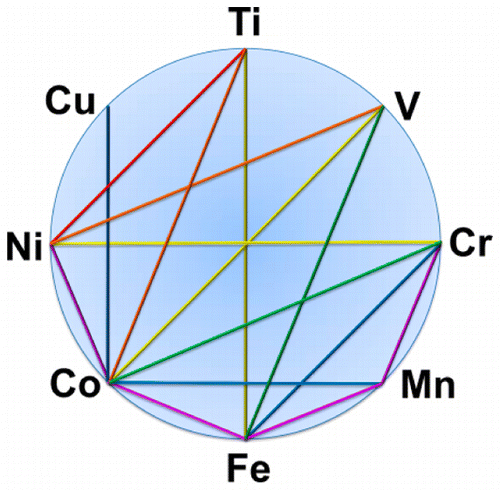当前位置:
X-MOL 学术
›
Acc. Chem. Res.
›
论文详情
Our official English website, www.x-mol.net, welcomes your
feedback! (Note: you will need to create a separate account there.)
Configuring Bonds between First-Row Transition Metals
Accounts of Chemical Research ( IF 16.4 ) Pub Date : 2015-10-22 00:00:00 , DOI: 10.1021/acs.accounts.5b00336 Reed J. Eisenhart 1 , Laura J. Clouston 1 , Connie C. Lu 1
Accounts of Chemical Research ( IF 16.4 ) Pub Date : 2015-10-22 00:00:00 , DOI: 10.1021/acs.accounts.5b00336 Reed J. Eisenhart 1 , Laura J. Clouston 1 , Connie C. Lu 1
Affiliation

|
Alfred Werner, who pioneered the field of coordination chemistry, envisioned coordination complexes as a single, transition metal atom at the epicenter of a vast ligand space. The idea that the locus of a coordination complex could be shared by multiple metals held together with covalent bonds would eventually lead to the discovery of the quadruple and quintuple bond, which have no analogues outside of the transition metal block. Metal–metal bonding can be classified into homometallic and heterometallic groups. Although the former is dominant, the latter is arguably more intriguing because of the inherently larger chemical space in which metal–metal bonding can be explored.
中文翻译:

配置第一行过渡金属之间的键
开拓配位化学领域的阿尔弗雷德·沃纳(Alfred Werner)将配位络合物设想为一个巨大的配体空间震中的单个过渡金属原子。配位络合物的位置可以被共价键结合在一起的多种金属共享的想法最终会导致发现四重和五重键,它们在过渡金属嵌段之外没有类似物。金属之间的键合可分为同金属和异金属基团。尽管前者占主导地位,但后者无疑更吸引人,因为其固有的更大的化学空间可用于探索金属与金属的键合。
更新日期:2015-10-22
中文翻译:

配置第一行过渡金属之间的键
开拓配位化学领域的阿尔弗雷德·沃纳(Alfred Werner)将配位络合物设想为一个巨大的配体空间震中的单个过渡金属原子。配位络合物的位置可以被共价键结合在一起的多种金属共享的想法最终会导致发现四重和五重键,它们在过渡金属嵌段之外没有类似物。金属之间的键合可分为同金属和异金属基团。尽管前者占主导地位,但后者无疑更吸引人,因为其固有的更大的化学空间可用于探索金属与金属的键合。


















































 京公网安备 11010802027423号
京公网安备 11010802027423号